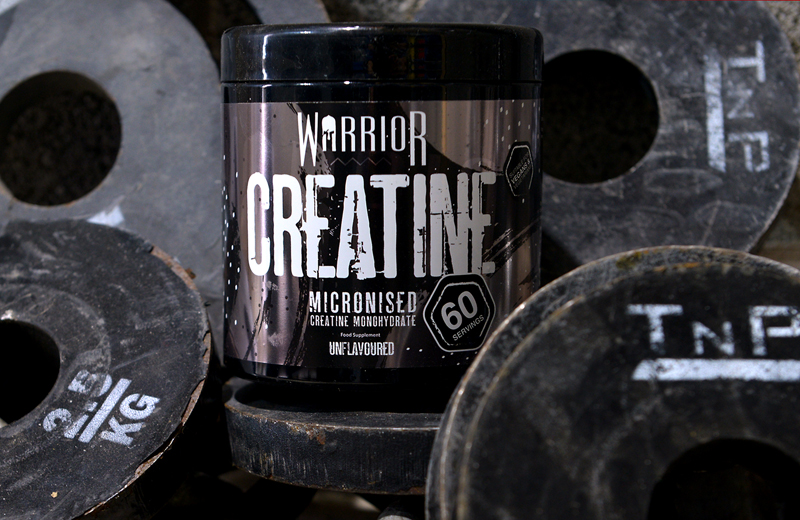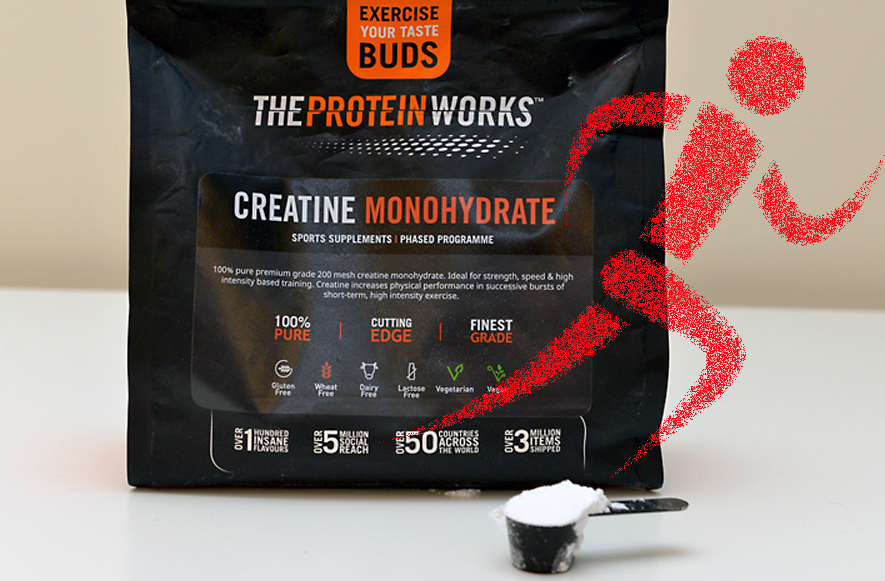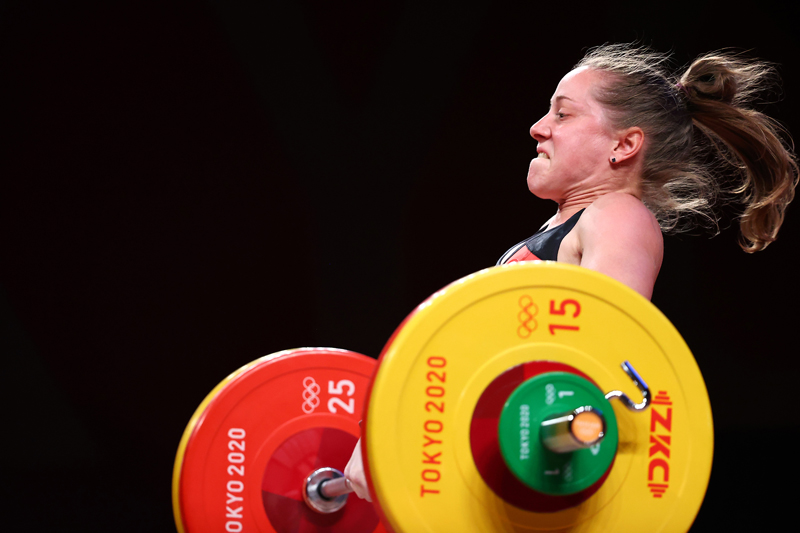Endurox supplement
Don't be taken in too soon by the claims of this latest 'magic potion'
If you're an athlete who attempts to stay up-to-date on the latest sports-nutrition research in order to find products that will help your performances, you must be crying out for relief right now. As you'll know from recent issues of PP, the number of supplements currently on the market is overwhelming, with creatine, vanadyl sulfate, choline, DHEA, HMB, branched-chain amino acids, conjugated linoleic acid, lean-mass stimulators, antioxidants, ephedrine, Echinacea, caffeine, glutamine, ginseng, glycerol, sodium bicarb, cow colostrum, carnitine, co-enzyme Q-10, cytochrome C, chromium picolinate, arginine, ornithine, and inosine (to name just a few) all vying for your limited sports-nutrition money. Some of them are not yet available in the UK, but can usually be ordered on the Internet.The hottest new product on the market is something called Endurox, formulated by the entrepreneurial people at Pacific Health Laboratories. It seems to be another one of those supplements you 'just can't be without', since it lowers heart rate, lifts lactate threshold, and helps you burn 43-per cent more fat when you train, according to the marketing hype. It's advertised heavily on the airwaves and on the net (you can visit the Endurox home page at www.endurox.com), and that fine endurance athlete, Joe Montana swears by the stuff. Sales are soaring.
Shades of Ma
What exactly is this new, potentially potent performance enhancer? It's a herbal product, formulated from a Chinese plant commonly called 'ciwujia', which grows in the swampy, spruce-fir taiga of northern China. The scientific name used for this bushy plant, according to Chinese botanical convention, is Radix Acanthopanax senticosus.
The fact that ciwujia is a Chinese herbal preparation makes it exciting to many athletes. For one thing, many of them remember Ma Junren's herbal 'caterpillar-fungus' concoction, which supposedly helped transform ordinary Chinese working women like Wang Junxia and Qu Yunxia into world-record-holding runners. They hope that ciwujia might have a similar power.
Ciwujia's entry into the athletic arena is fairly recent, but its use by humans actually goes back a long way. Although the plant has not found its way into the pharmacopoeia of Western medicine just yet, it has been used continuously in traditional Chinese medicine for about 1700 years. In China, the root of ciwujia is often prescribed as a 'tonic' to reduce fatigue and boost energy levels. Ciwujia is also used to treat diseases involving pain and inflammation of the muscles, connective tissues, and joints, including rheumatoid arthritis, and many Chinese medical practitioners believe the plant has prophylactic properties for such serious disorders as bronchitis, high blood pressure, and ischaemic heart disease (in which heart muscle receives an inadequate supply of blood and oxygen). In China, there is also a widespread belief that ciwujia can enhance immune-system activity.
Chemical analysis of ciwujia's ingredients has led to the isolation of eight 'saponins' commonly found in the plant. No need to review your biochemistry right now: saponins are simply compounds formed of sugar and 'something else', with the 'something else' often turning out to be a steroid compound.
As you know, steroids are chemicals involved in key physiological processes within the body, including those reactions which build and repair tissues. Thus, if ciwujia can indeed produce positive physiological changes in humans, it's likely that the saponins will be the responsible parties.
In the case of ciwujia's saponins, which are called 'ciwujianosides', it's known that at least two of them - ciwujianoside C1 and ciwujianoside D1 - can have some fairly dramatic effects on cells cultured from laboratory animals. Studies carried out at Tokushima Bunri University in Japan demonstrate that C1 and D1 can significantly reduce white blood cells' production of a chemical called histamine. Since histamine promotes inflammation and swelling of tissues, C1 and D1 appear to have anti-inflammatory properties. And since histamine is a major player in allergic reactions and asthma (it dilates blood vessels lining airways and causes them to leak fluid into the surrounding tissues, helping to close off air passageways and making breathing more difficult), the Japanese researchers speculated that C1 and D1 could be powerful anti-allergy and anti-asthma agents. Indeed, in the laboratory research with cell cultures the two ciwujianosides proved to be about 6800 times more potent than a commonly prescribed anti-allergic drug ('Ciwujianosides D1 and C1: Powerful Inhibitors of Histamine Release Induced by Anti-Immunoglobulin E from Rat Peritoneal Mast Cells,' Journal of Pharmaceutical Sciences, vol. 81 (7), pp. 661-662, 1992).
Hold your horses
However, before you get too excited about ciwujia's potential puissance, bear in mind that this Japanese work was an 'in vitro' study, eg, one carried out with isolated cell cultures in a laboratory - not in actual living organisms. It's important to remember that many chemicals that work very well in in vitro studies often turn out to be poor performers when they are tested in humans or other live animals, because the biochemical environment in which the compounds are asked to perform is totally different in a complex living system - and the actual concentrations of the chemicals may be quite different (usually lower), too. The fact that the rather stunning results obtained by the Japanese in their in vitro research were not followed up with published work demonstrating the ciwujianosides' anti-allergic properties in humans or other animals tells us that perhaps the compounds flopped in the 'in vivo' environment (inside living things).
Nonetheless, interest in ciwujia has remained high, partially thanks to anecdotal reports from mountain climbers, who have used ciwujia root to heighten vigour and withstand the debilitating effects of low oxygen pressures during high-altitude Himalayan climbs (these adventurers commonly chewed about an ounce of the raw herb per day). Investigative efforts carried out by Chinese scientists have suggested that ciwujia might increase the oxygenation of heart muscle and help laboratory animals survive low-oxygen conditions for longer periods of time.
Impressed by the mountain-climbing reports and initial laboratory ciwujianoside studies, Chinese investigators began to utilise ciwujia in research that focused on the plant's potential ability to expand overall physical endurance. These initial efforts were simple - and brutal: laboratory rats or mice were given ciwujia or some other supplement and then tossed into a huge bucket filled with water, while researchers recorded the amount of time they were able to swim before sinking. These experiments, carried out at the Institute of Nutrition and Food Hygiene in Beijing, seemed to support the idea that ciwujia could promote endurance.
In these as-yet unpublished studies, ciwujia was compared with ginseng, caffeine, and mixtures of ginseng, cordyceps, and wolfberry (other plants which have been suggested to have fatigue-resistance properties). The write-ups of this research indicate that ciwujia always came out the winner. For example, mice given ciwujia a couple of hours before they took the plunge could usually swim for 70 to 100 minutes, while control animals who went cold turkey lasted just 25 to 60 minutes, and cordyceps-ginseng-wolfberry animals swam for only 37 to 75 minutes.
These crude efforts were followed by work with human animals. In the study which Pacific Health raves about on its Internet home page, eight healthy (but untrained) adults pedalled on stationary bicycles for 21 minutes. Initial work-load was set at 60 Watts, with intensity increasing by 30 Watts every three minutes (the final three-minute interval was at 210 Watts). To determine anaerobic power, each subject also worked at maximal intensity for a period of 30 seconds. Heart rate, lactate production, and fat metabolism were closely monitored during these exertions.
Each of the eight subjects then ingested 800 mg of ciwujia per day (the amount in two capsules of Endurox) over a two-week period. They then reported back to the laboratory and repeated the initial exercise tests.
It makes a good story: the bikers burned more fat after taking ciwujia. Since they were burning more fat, they must have been breaking down less carbohydrate, so there was little lactate build-up and lactate threshold was higher. Somehow, the heart was stronger, too, and needed to beat only mildly during recovery. So, when American football star Joe Montana says that ciwujia 'has really helped me get more out of my workouts', it seems believable, given the striking results.
Except for one thing
But, if you were following carefully, you may have noticed that there is a major problem with this research: there was no control group! All the subjects took the exercise test, dosed themselves with ciwujia for two weeks, and then repeated the tests.
And that simple fact makes the study essentially worthless.The enhanced fat-burning, lower lactate, and assuaged hearts in the second test might have been due to a learning effect, not to ciwujia. For example, during the first test the subjects may not have been familiar and at ease with the oxygen masks they were required to wear (and breathe through), or the pedal resistance on the bikes, the moderate-to-high intensities used during tests, or the overall laboratory set-up. The second time around, they were no doubt more comfortable (they had learned what to expect and were confident that they could handle the situation) and therefore found the exertions less stressful. That alone could account for lower lactate, relaxed cardiac action, and better 'butter burning'. Or perhaps the subjects took their own bikes down Beijing boulevards at high speeds between the first and second exertions in order to 'tune themselves up' for the second test. Since there was no control group, we don't know what really happened.
It's actually very common for individuals to perform better on a second exercise test, compared to a first, even without any specific training or physiological improvement, simply because they have become more comfortable with the total test environment. In addition, the performance upgrade on the second examination may have been at least partially due to the well-known 'placebo effect', in which subjects perform better simply because they believe they have been taking a substance which improves performance.
One might argue that the subjects 'served as their own controls', since they exercised both with and without ciwujia, but that is not really true. To make such a study work, you would have to use a 'crossover' design, in which some of the individuals would take ciwujia before their first test - and then placebo capsules before their second test. That would allow one to skirt the learning-and-familiarisation (and also placebo) effects which we discussed above.
Unfortunately, the other research that has been recently carried out with ciwujia is pretty much in the same league. In one study done by researchers from the University of North Texas, 13 'elderly' (actually, their ages ranged from 50 to 57) subjects 'peddled' at speeds of 60 rpm and a meagre intensity of 75 Watts for 44 minutes, with and without pre-exercise ciwujia dosing. It's not clear whether this mercantile activity had any effect on their physiological responses, but the cyclists did have 7- to 8-per cent lower heart rates following ciwujia ingestion. Interestingly enough, however, exercise economy was actually harmed after ciwujia intake, with oxygen consumption rising by 6.5 per cent, and total energy expenditure heightened by 4 per cent, perking up the ears of those people who are interested in weight loss.
The main problem with this North Texas study was that the methodology was flawed in the same way: there was no control group. Subjects took part in the exercise test, supplemented their diets with ciwujia for 10 days, and then simply re-took the test. This kind of research just doesn't tell us anything useful.
So, although the ciwujianosides, the bio-chemically active ingredients in Endurox, do seem to have some strong physiological effects in in vitro research, it's far too early to tell whether ciwujia can actually improve workouts and heighten performances, in spite of all the claims being made by its marketers.
Ciwujia and Eleutherococcus senticosus
As you read the above, you may have noticed that the scientific name for ciwujia, Radix Acanthopanax senticosus, seemed somehow familiar. If you're a regular subscriber to Sports Performance Bulletin, you may recall that we recently provided (in issue 65, January 1996) a fairly positive account of Eleutherococcus senticosus, a plant which grows naturally in Russia and is considered to be one of the key 'adaptogens'. Adaptogens are defined as protective, non-toxic compounds which may increase one's resistance to stress and normalise physiological processes which have been disturbed.
Radix Acanthopanax senticous and Eleuthero-coccus senticosus are indeed very closely related. In fact, some experts contend that they are actually the same species of plant - but with different areas of growth. Basically, E. senticosus is found in Siberia, while Acanthopanax senticosus grows in Manchuria and northeastern China.
Extracts of Eleutherococcus senticosus have improved immune-system functioning in high-quality research ('Flow Cytometric Studies with Eleutherococcus senticosus Extract as an Immunomodulatory Agent,' Arzneimittel-Forschung Drug Research, vol. 37(10), pp. 1193-1196, 1987), so isn't it reasonable to expect that the closely related ciwujia would have the same useful properties? Not necessarily. Reports have indicated that ciwujia may be deficient in a chemical called Eleutheroside B, which is believed to be the most potent ingredient in E. senticosus. Thus, it's not at all clear that ciwujia would work as well as the Russian variant.
So, what's the bottom line? Is Endurox (ciwujia) actually worth buying? Well, despite the fact that fine American athletes such as Jeff Galloway and Frank Shorter have offered glowing reports on the product, we don't recommend that you purchase Endurox at this time. The research so far has been positive, but it has also been of very low quality, so it's wise to wait for the results of investigations that are carried out in a sound manner - with actual placebos and control groups (Pacific Health indicates that such studies are being conducted at the moment). If such research shows that Endurox can actually help you train more effectively or get you to the finishing line more quickly, only then should you open your wallet or purse and send some of your hard-earned cash to the people at Pacific Health.
Owen Anderson
You need to be logged in to continue reading.
Please register for limited access or take a 30-day risk-free trial of Sports Performance Bulletin to experience the full benefits of a subscription. TAKE A RISK-FREE TRIAL
TAKE A RISK-FREE TRIAL
Newsletter Sign Up
Testimonials
Dr. Alexandra Fandetti-Robin, Back & Body Chiropractic
Elspeth Cowell MSCh DpodM SRCh HCPC reg
William Hunter, Nuffield Health
Newsletter Sign Up
Coaches Testimonials
Dr. Alexandra Fandetti-Robin, Back & Body Chiropractic
Elspeth Cowell MSCh DpodM SRCh HCPC reg
William Hunter, Nuffield Health
Keep up with latest sports science research and apply it to maximize performance
Today you have the chance to join a group of athletes, and sports coaches/trainers who all have something special in common...
They use the latest research to improve performance for themselves and their clients - both athletes and sports teams - with help from global specialists in the fields of sports science, sports medicine and sports psychology.
They do this by reading Sports Performance Bulletin, an easy-to-digest but serious-minded journal dedicated to high performance sports. SPB offers a wealth of information and insight into the latest research, in an easily-accessible and understood format, along with a wealth of practical recommendations.
*includes 3 coaching manuals
Get Inspired
All the latest techniques and approaches
Sports Performance Bulletin helps dedicated endurance athletes improve their performance. Sense-checking the latest sports science research, and sourcing evidence and case studies to support findings, Sports Performance Bulletin turns proven insights into easily digestible practical advice. Supporting athletes, coaches and professionals who wish to ensure their guidance and programmes are kept right up to date and based on credible science.









